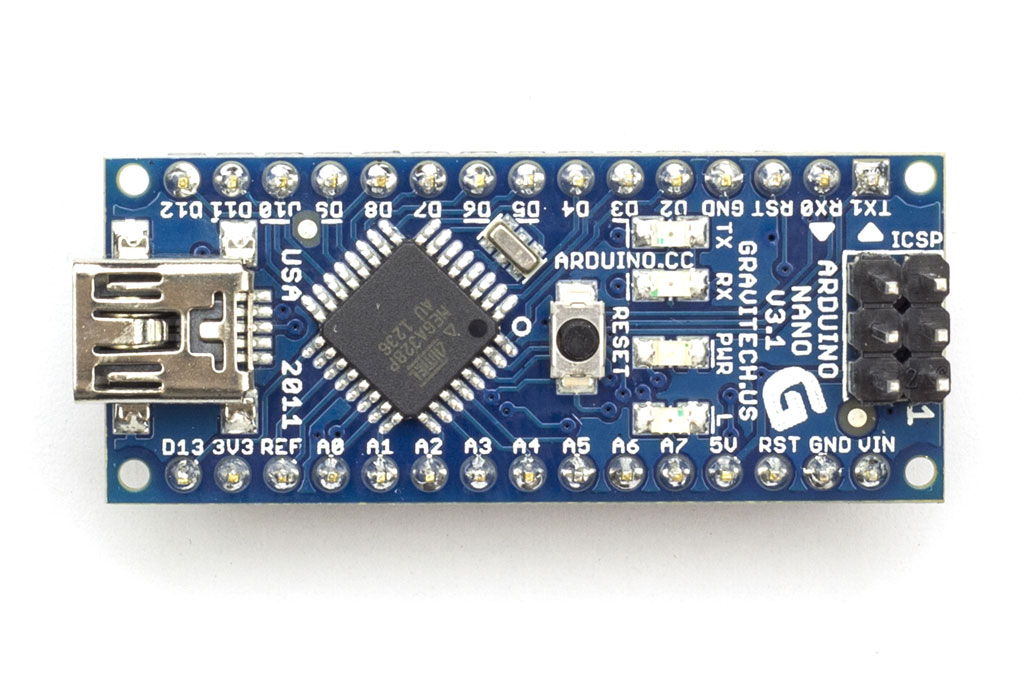약간 전류 소모가 있는 모터(1A이상 2A이하)를 제어하는데 많이 사용되는 모터 드라이버 입니다.
잘써먹고 있는데, rc차량 만들면서 만들었던 제어 코드 입니다.

일단 보시면 생김새는 위와 같습니다.
Output A와 B에 모터를 연결합니다.
12V Power 에는 모터제어용 배터리의 +극을 연결합니다. 12V라고 적혀 있지만 꼭 12V를 연결할 필요는 없습니다. 허용가능한 전압 범위가 있는데 관련해서는 찾아보시기 바랍니다.
Power Gnd 에는 배터리 -를 연결하는데 그라운드는 아두이노와 묶어주셔야 합니다.
+5V Power에는 기본적으로는 아무것도 연결을 안하는데 만일 5V Enable이라고 되어 있는 곳에 있는 점퍼 핀을 빼시게 될경우
여기에 5V전압을 공급해주셔야 합니다.
점퍼핀은 위로 잡아 땡기면 빠집니다.
A 및 B Enable 단자는
PWM제어를 위한 단자입니다. PWM제어 없이 정/역 제어만 하실경우에는 그냥 점퍼핀을 그대로 연결해 두면되고
만일 PWM 제어까지 필요하다면 점퍼핀을 빼시고, 각기 아두이노의 PWM핀에 연결해주시면됩니다.

Input은 정역 제어를 위한 제어 신호를 입력합니다.
4개의 단자가 있는데 모터 1개가 각기 2개의 제어핀을 사용합니다.
각각 IN1, IN2, IN3, IN4라고 되어있는데, 생김새는 같은데 여러제조사에서 많이 만들기 때문에 표기가 조금 다를 수 있습니다.
IN1과 IN2는 OUTPUT A를 제어 합니다.
IN3와 IN4는 OUTPUT B를 제어합니다.
IN1 또는 IN3 |
IN2 또는 IN4 |
제어결과 |
HIGH |
LOW |
모터 정회전 |
LOW |
HIGH |
모터 역회전 |
HIGH |
HIGH |
모터 정지 |
LOW |
LOW |
모터 정지 |
위의 표에 나와있는것과 같이 입력핀에 가하는 신호에 따라서 모터가 정/역 회전하거나 정지 하게 됩니다.
아래는 제어 코드와 간략한 예제입니다.
//모터1 제어핀
#define MOTOR_PIN1 7
#define MOTOR_PIN2 8
//모터2 제어핀
#define MOTOR_PIN3 9
#define MOTOR_PIN4 10
//모터1 pwm핀
#define MOTOR_PWM1 5
//모터2 pwm핀
#define MOTOR_PWM2 6
class CDCMotorDriver
{
protected:
char m_cPin1; //모터1제어핀, IN1, IN2, 모터1은 좌측 모터라 하겠습니다.
char m_cPin2;
char m_cPin3; //모터2 제어핀, IN3, IN4, 모터2는 우측 모터라 하겠습니다.
char m_cPin4;
char m_cPwm1; //모터1 PWM 제어핀, ENA
char m_cPwm2; //모터2 PWM 제어핀, ENB
bool m_bEnablePWM;
public:
/*
pwm제어를 사용하지 않는경우, pwm1, pwm2에는 0을 bEnablePWM에는 false를
*/
CDCMotorDriver(int pin1, int pin2, int pin3, int pin4, int pwm1, int pwm2, bool bEnablePWM)
{
m_cPin1 = (char)pin1;
m_cPin2 = (char)pin2;
m_cPin3 = (char)pin3;
m_cPin4 = (char)pin4;
m_cPwm1 = (char)pwm1;
m_cPwm2 = (char)pwm2;
m_bEnablePWM = bEnablePWM;
}
void Init()
{
pinMode(m_cPin1, OUTPUT);
pinMode(m_cPin2, OUTPUT);
pinMode(m_cPin3, OUTPUT);
pinMode(m_cPin4, OUTPUT);
pinMode(m_cPwm1, OUTPUT);
pinMode(m_cPwm2, OUTPUT);
StopAll();
}
//두 모터를 정회전 제어한다.
//leftspeed : 0 ~ 255사이의 값으로 모터 속도를 제어, pwm제어를 하지 않을경우 0
//rightspeed : 0 ~ 255사이의 값으로 모터 속도를 제어, pwm제어를 하지 않을경우 0
void ForwardAll(unsigned char leftspeed, unsigned char rightspeed)
{
Forward(true, leftspeed);
Forward(false, rightspeed);
}
//두 모터를 같은 속도로 역회전 제어한다.
//leftspeed : 0 ~ 255사이의 값으로 모터 속도를 제어, pwm제어를 하지 않을경우 0
//rightspeed : 0 ~ 255사이의 값으로 모터 속도를 제어, pwm제어를 하지 않을경우 0
void BackwardAll(unsigned char leftspeed, unsigned char rightspeed)
{
Backward(true, leftspeed);
Backward(false, rightspeed);
}
//모든 모터를 정지 시킨다
void StopAll()
{
Stop(true);
Stop(false);
}
//좌측 모터를 해당 속도로 정회전
//speed : 모터 제어속도, 0 ~ 255, pwm제어를 하지 않을경우 0
void ForwardLeftMotor(unsigned char speed)
{
Forward(true, speed);
}
//우측 모터를 해당 속도로 정회전
//speed : 모터 제어속도, 0 ~ 255, pwm제어를 하지 않을경우 0
void ForwardRightMotor(unsigned char speed)
{
Forward(false, speed);
}
//좌측 모터를 해당 속도로 역회전
//speed : 모터 제어속도, 0 ~ 255, pwm제어를 하지 않을경우 0
void BackwardLeftMotor(unsigned char speed)
{
Backward(true, speed);
}
//우측 모터를 해당 속도로 역회전
//speed : 모터 제어속도, 0 ~ 255, pwm제어를 하지 않을경우 0
void BackwardRightMotor(unsigned char speed)
{
Backward(false, speed);
}
//좌측 모터만 정지
void StopLeft()
{
Stop(true);
}
//우측 모터만 정지
void StopRight()
{
Stop(false);
}
private:
//좌측 또는 우측 모터를 해당 속도로 정회전 제어한다
//bMotor1 이 true일경우 좌측 모터 false 이면 우측모터
//speed : 모터 제어속도, 0 ~ 255, pwm제어를 하지 않을경우 0
void Forward(bool bMotor1, unsigned char speed)
{
if (bMotor1)
{
digitalWrite(m_cPin1, HIGH);
digitalWrite(m_cPin2, LOW);
if (m_bEnablePWM)
{
if (speed >= 255)
digitalWrite(m_cPwm1, HIGH);
else
analogWrite(m_cPwm1, speed);
}
}
else
{
digitalWrite(m_cPin3, HIGH);
digitalWrite(m_cPin4, LOW);
if (m_bEnablePWM)
{
if (speed >= 255)
digitalWrite(m_cPwm2, HIGH);
else
analogWrite(m_cPwm2, speed);
}
}
}
//좌측 또는 우측 모터를 해당 속도로 역회전 제어한다
//bMotor1 이 true일경우 좌측 모터 false 이면 우측모터
//speed : 모터 제어속도, 0 ~ 255, pwm제어를 하지 않을경우 0
void Backward(bool bMotor1, unsigned char speed)
{
if (bMotor1)
{
digitalWrite(m_cPin1, LOW);
digitalWrite(m_cPin2, HIGH);
if (m_bEnablePWM)
{
if (speed >= 255)
digitalWrite(m_cPwm1, HIGH);
else
analogWrite(m_cPwm1, speed);
}
}
else
{
digitalWrite(m_cPin3, LOW);
digitalWrite(m_cPin4, HIGH);
if (m_bEnablePWM)
{
if (speed >= 255)
digitalWrite(m_cPwm2, HIGH);
else
analogWrite(m_cPwm2, speed);
}
}
}
//좌측 또는 우측 모터를 정지 시킨다
//bMotor1 이 true일경우 좌측 모터 false 이면 우측모터
void Stop(bool bMotor1)
{
if (bMotor1)
{
digitalWrite(m_cPin1, LOW);
digitalWrite(m_cPin2, LOW);
}
else
{
digitalWrite(m_cPin3, LOW);
digitalWrite(m_cPin4, LOW);
}
}
};
CDCMotorDriver g_MotorDriver(MOTOR_PIN1, MOTOR_PIN2, MOTOR_PIN3, MOTOR_PIN4, MOTOR_PWM1, MOTOR_PWM2, true);
void setup()
{
//반드시 Init을 한번 호출해 줍니다.
g_MotorDriver.Init();
}
void loop()
{
//2초동안 두개 모터를 모두 최고 속도로 정회전 제어 합니다.
g_MotorDriver.ForwardAll(255, 255);
delay(2000);
//2초동안 두개 모터를 모두 최고 속도로 역회전 제어 합니다.
g_MotorDriver.BackwardAll(255, 255);
delay(2000);
//1초동안 모든 모터를 정지 시킵니다.
g_MotorDriver.StopAll();
delay(1000);
//1초동안 좌측 모터만 1/2속도로 정회전 시킵니다.
g_MotorDriver.ForwardLeftMotor(127);
delay(1000);
//1초동안 우측 모터만 1/2속도로 정회전 시킵니다.
g_MotorDriver.StopLeft(); //일단 회전하고 있는 좌측 모터는 정지 시키고
g_MotorDriver.ForwardRightMotor(127);
delay(1000);
//2초동안 좌측은 1/2속도로 정회전, 우측은 최고 속도로 역회전시킵니다.
g_MotorDriver.ForwardLeftMotor(127);
g_MotorDriver.BackwardRightMotor(255);
delay(2000);
}
아두이노 스케치 파일
 motortest.zip
motortest.zip








 motortest.zip
motortest.zip
